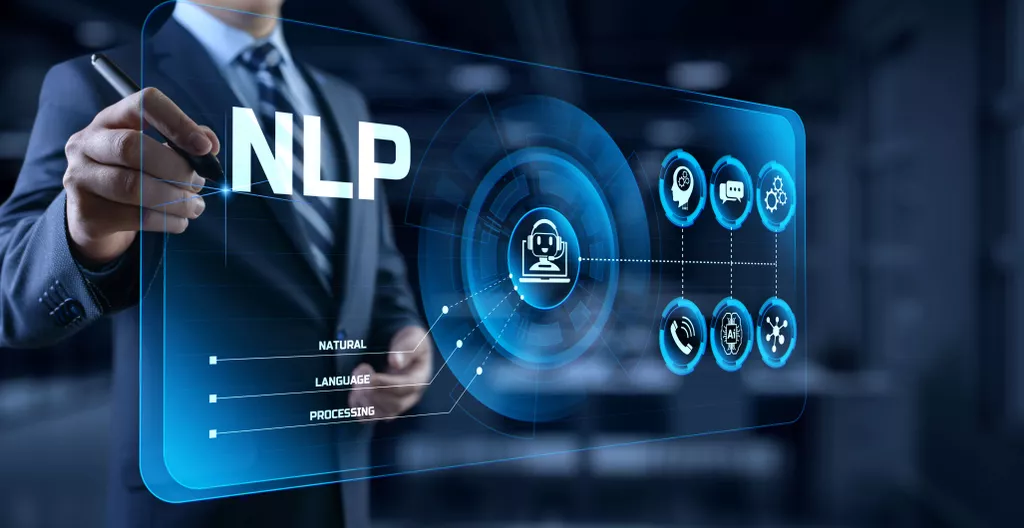ChatGPT internals, and its Enterprise Use-cases by Debmalya Biswas DataDrivenInvestor
Mostbet-az91: İdman Mərcləri Və Giri Solusi Publikasi Jurna জেএসএফ সার্ভিসেস কোম্পানি লিমিটেড।May 28, 2023
Partidos De Hoy, Mayo 24-2024 Viernes Fútbol En Vivo: Programación Tv Set Y Streaming, Horarios, Canales, Dónde Ver Y Resultados Apuestas Del Día Pronósticos Deporte-tota
May 30, 2023Chatbots can capture leads, qualify prospects, and even complete sales transactions. They can also provide targeted marketing messages to customers based on their interests and previous interactions with the company. However, for more complex sales transactions, human intervention may be necessary. It can integrate chatbots with various business systems such as CRM systems, e-commerce platforms, messaging apps, etc. Rule-based chatbots are also known as “flow bots” or “decision-tree chatbots.
Rule-based chatbots work on a set of rules whereas AI and machine learning-based chatbots use sets of data and leverage machine learning to learn and understand your customers better. With most enterprise chatbot platforms it is relatively easy to set up your text responses and teach the chatbot the necessary natural language capability to safely match a question to an answer. In the consumer world, customers can use chatbots to order pizzas, pay bills and talk to customer support. For chatbot use cases in the corporate world, an executive in a board meeting could use an enterprise bot to explore the latest sales numbers just by asking a voice-based digital assistant.
Cloud Platform
TRU’s chatbot now handles 83% of chats in the Future Student department without any human intervention. One of the greatest chatbot use cases is the ability to introduce cost-effective 24/7 support. With chatbots handling the majority of simple requests as we saw in our last chatbot example, they allow support teams to expand service hours without hiring additional agents or expanding agent hours. With guidance from Comm100, Canadian Blood Services set up a chatbot in less than a month. The chatbot is designed to handle the basic requests that were taking up significant amounts of agent time.
- Oftentimes, your website visitors are interested in purchasing your products or services, but need some assistance to make that final step.
- AI chatbots with natural language processing (NLP) and machine learning enabled help boost your support agents’ productivity and efficiency using human language analysis.
- Once you identify more loopholes and exceptions, the next step is to fix them and refine the flow.
- Chatbots can be used for customer service applications because they can handle multiple requests and users and leverage the company’s internal customer data to respond quickly with accurate responses.
- It represents Google’s commitment to pushing the boundaries of conversational AI, offering an engaging chatbot experience.
- AskHR is an AI-powered HR chatbot that enables employees to get answers to the most frequently asked questions.
While ChatGPT certainly sounds human-like, many of its answers come across as overly formal or robotic which is not good for friendly customer service. ChatGPT still doesn’t quite grasp the subtleties and nuances of interpersonal interaction, and has a way to go before it can achieve the level of casualness that many customers require. ChatGPT can be used to automate away the majority of routine inquiries through self-service, eliminating the need for manual processes. Customer service agents can be freed up to engage in tasks that require a human level of intelligence with more insight and creativity.
User understanding & friendliness
The Agent Workspace in Zendesk provides agents with a real-time, conversation-focused interface to seamlessly manage conversations between agents and bots. HubSpot offers a chatbot solution that can be integrated with its marketing and sales platform. It uses natural language processing and machine learning to engage website visitors and provide relevant information. Zendesk offers a chatbot solution that can be integrated with its customer service platform.
From the consumer side, what users love most about chatbots is their ability to provide quick answers and their availability. In fact, Userlike’s reports show 68% of users favor chatbots given their quick answers, listing this as the number one aspect of their positive interactions. Be it with an insurance company, ordering food, asking about a delivery, or booking a flight, the chatbot possibilities are endless.
Need a chatbot for your website?
The benefits of chatbots are many, and all at an attractive price with regards to their ROI. And when that happens, your customer or prospect should be able to easily escalate that conversation to a voice or video call with a live agent. This type of guidance in real-time can help personalize the shopping experience and lead to more conversions too. For example, your chatbot could point out promotions and discount codes that someone window shopping virtually on your website may miss, which increases the likelihood of purchase. Alternatively, you could place a chatbot in the check-out page of your site to answer questions and alleviate cart abandonment. In 1988, Rollo Carpenter created Jaberwacky, a British chatterbot that was built to “simulate natural human chat in an interesting, entertaining, and humorous [sic] manner”.
Artificial Intelligence is the future for businesses looking to automate everyday processes – The Standard
Artificial Intelligence is the future for businesses looking to automate everyday processes.
Posted: Wed, 07 Jun 2023 08:01:40 GMT [source]
These chatbots can handle multiple requests simultaneously and resolve issues faster than regular chatbots. This is because the bot was trained on company data, which improved the accuracy and timeliness of the output. Using conversational AI chatbots for ITSM tools ensures you can fetch real data that gives a view of performance metrics and business results.
Answer Frequent Questions
It will also explore the advantages and effective strategies for using enterprise chatbots with customer service applications and other enterprise-level tools. Plus, it will describe best practices by using examples of successful implementations. And we’ll look at how enterprise chatbots work with enterprise resource software and enterprise apps. Chatbots can enable around-the-clock support with unlimited capacity, and we shouldn’t overlook the fact that chatbots also handle these interactions with an immediate response. For customers with simple problems, this means an immediate resolution with zero wait time. And because chatbots can handle these simple queries, customers with more complex questions will also see reduced wait times for agents.
- The bot app also features personalized practices, such as meditations, and learns about the users with every communication to fine-tune the experience to their needs.
- This means the agent will be able to jump on and have access to all of the important info from the get-go.
- The next thing to do is to create a chatbot project plan and requirements.
- The hospitality industry is hugely dependent on customer service, goodwill, reviews, and references.
- Conversational AI chatbots can handle open-ended questions and advanced queries.
- This architecture consists of multiple layers of interconnected nodes, each performing a set of mathematical operations on the input data.
This way, the shopper can find what they’re looking for easier and quicker. And research shows that bots are effective in resolving about 87% of customer issues. Customers expect personalized experiences at each stage of the journey with a brand. FitBot is the way trainers communicate with clients, both onsite and remote coaching. As per research, the participants who used the chatbot were 26% more likely to meet or exceed personal fitness goals compared to participants that didn’t use the technology.
Top 10 Best Enterprise Chatbot Companies in 2023 – A Global Overview
Providing your SaaS product customers with self-service support means that you’re enabling them to comp… With ChatGPT, you are limited to performing a single task at a time. You can’t multitask with ChatGPT so users must simply ask one question and then wait for the answer. For example, ChatGPT couldn’t analyze a customer’s question and simultaneously ask a colleague for help, since it is limited to a back-and-forth interaction. You can use multiple-choice questions that offer more options for visitors to choose from or ask open-ended questions. Irrespective of the nature of the questions, you need to focus on creating the right questions to understand their pain points and possible product recommendations to overcome their challenges.
Going a step further, in Oct 2019, the company announced the addition of an enterprise-grade Natural Language chatbot to its Digital Employee Experience Platform (DEXP). The new chatbot functions as a centralized workplace, capable of handling inquiries from across the enterprise (HR, IT, Finance, Facilities, etc.). It provides employees with a more personalized and contextual experience for answering questions, finding information, and performing tasks.
Voice-Enabled Chatbots
They partnered with ubisend, a Soprano Group company, to achieve this goal. When thinking about use cases, you can get back to the top of our article and get inspiration from the use cases we mention. However, it’s good to analyze frequent issues and requests that are in your specific company. The HBR study found that over the past two decades, employees’ time spent in collaborative activities has raised by at least 50%.
- Second, around business insights, one of the largest challenges in data science has been the separation of the business user from the data scientist.
- Like Twyla, Nanorep also helps customer service employees by answering common questions.
- However, these support channels aren’t connected to your contact center software.
- Decision tree bots enable you to design customized conversation flows that provide customers with quick answers, suggest knowledge base articles, and include triggers for handoffs to a live agent.
- Conversational AI chatbots provide the convenience of configuring rules and conditions to train the bot and to improve situational awareness.
- The search interaction feature lets users search for answers by searching results from Google or Bing within the chatbox.
I guess what frustrates people most is the ‘advertisement’ results that Google pushes at the top, rather than the most relevant results. In short, nothing much will change dramatically, other than the size of the underlying LLMs. ChatGPT upended the game here by allowing the user to ask anything – significantly lowering the barrier to entry. This was complemented by ChatGPT responding with appropriate safety guards in place.
In 2016, they started working to create a solution that would improve the efficiency of the client’s existing cleaning solutions. It’s also critical to work with vendors offering strong data usage and ownership policies. For example, users can add data and tune parameters metadialog.com of the GTP-3 model or dataset. The way someone submits questions to those models can also be influenced by the wording used to ask the questions. “Creating email sales campaign material or suggesting answers to customer agents is reasonable usage,” Gartner’s Elliot added.
Ziflow announces AI-powered collaboration via a new generative … – PR Web
Ziflow announces AI-powered collaboration via a new generative ….
Posted: Thu, 13 Apr 2023 07:00:00 GMT [source]

